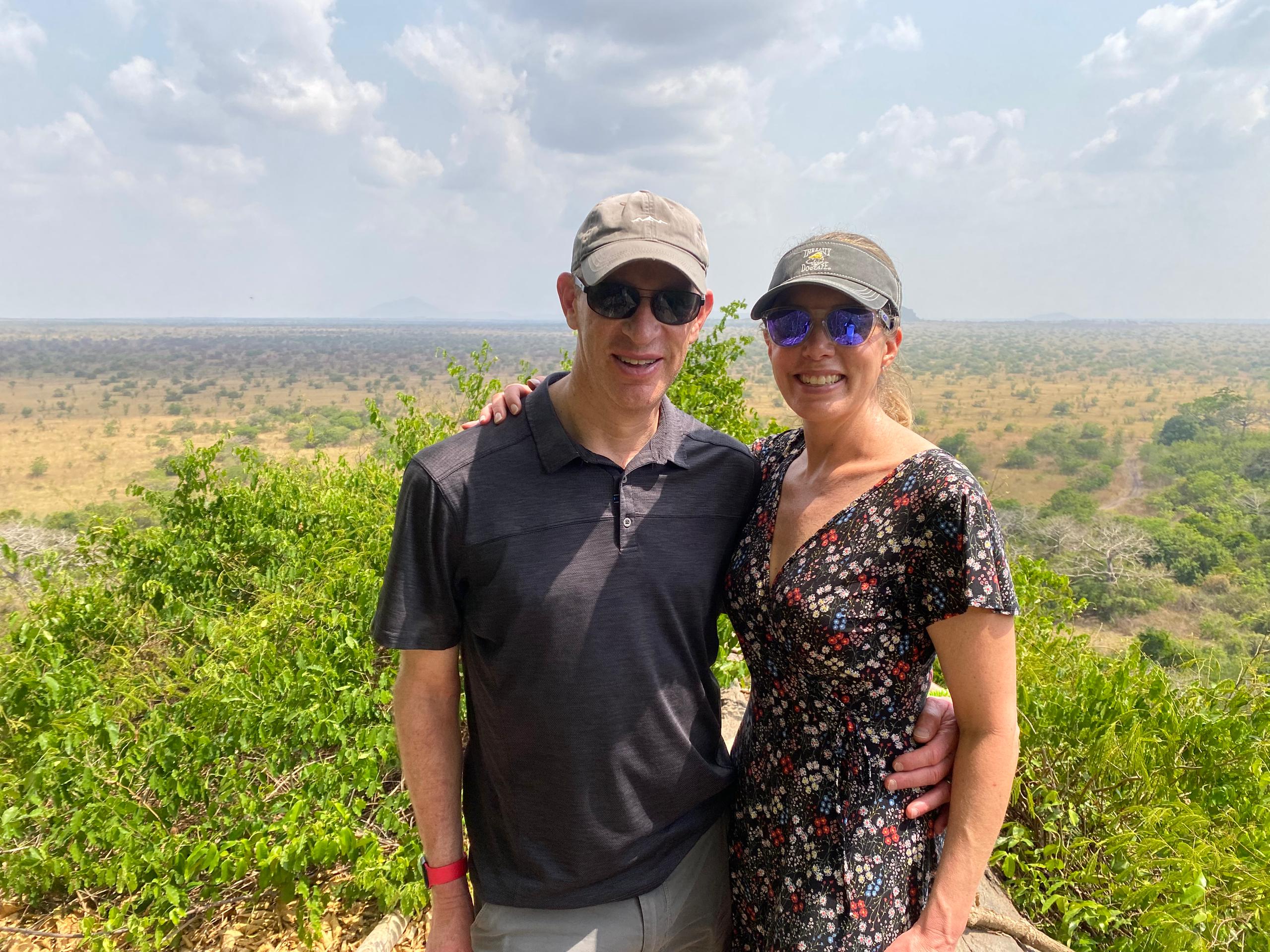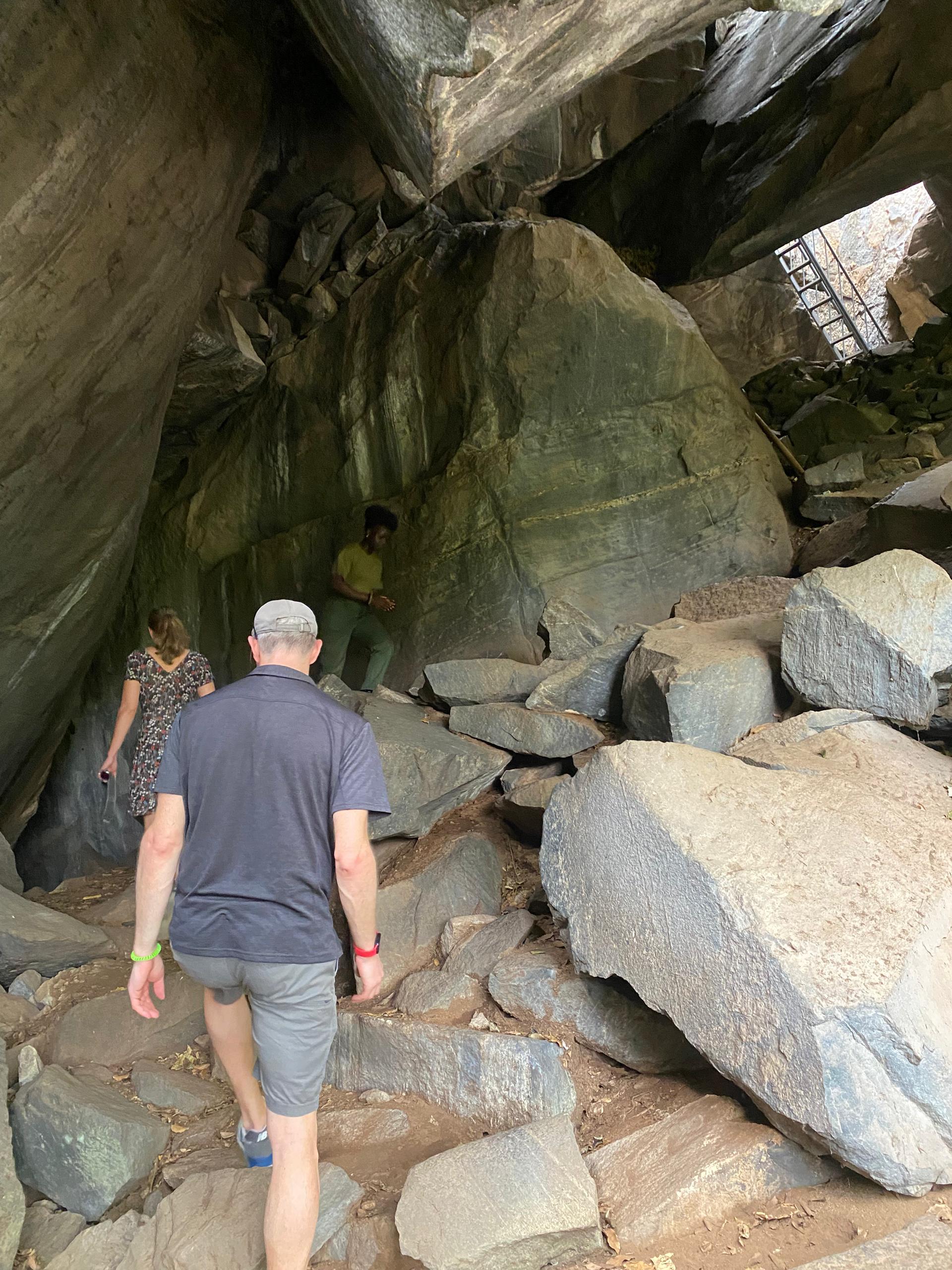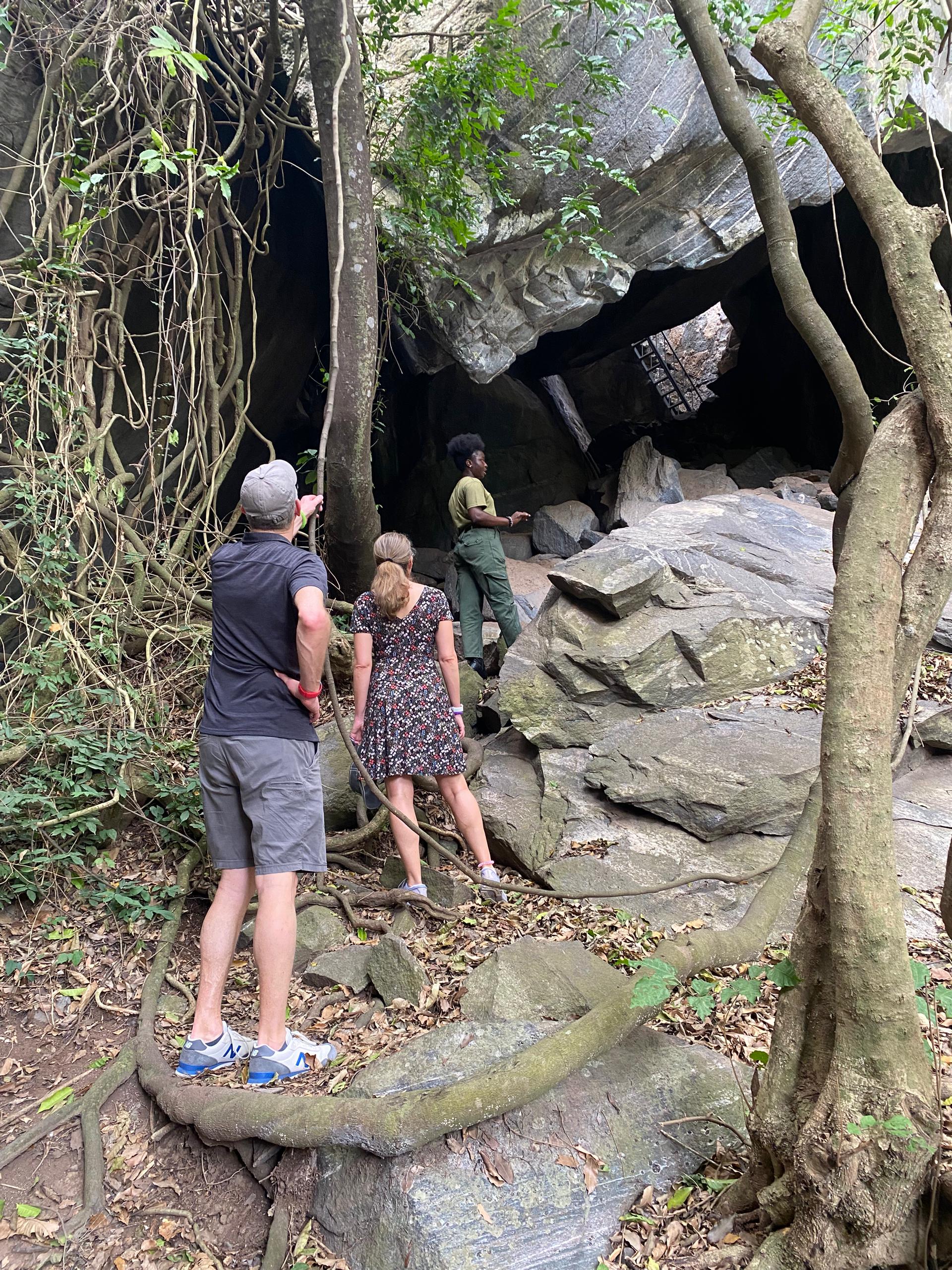Ever walked into a royal palace...backwards, with a leaf in your mouth? Deep within the Shai Hills Resource Reserve — just about an hour's drive from Accra — lies a mysterious network of ancient caves that once housed one of Ghana's resilient indigenous groups: the Shai people. Among these caves is one steeped in unique cultural tradition and mystical symbolism — the Sayu Cave.

Long before the Sayu Caves became a point of intrigue for explorers and heritage enthusiasts, they were home — sacred, spiritual, and strategic — for one of Ghana's enduring indigenous communities: The Shai tribe.
Known traditionally as the Sɛ, the Shai form part of the larger Dangme ethnic group and speak the Adangme language — a dialect shared closely with their Krobo cousins. Nestled in what is now Shai-Osudoku District, this community lived in harmony with the land, drawing strength, identity, and survival from the very hills that tower over the savannah plains.

One of the Shai's most renowned traditions is the Dipo rite of passage, a deeply symbolic ceremony that marks the transition of girls into womanhood through home training, dance, and ancestral rituals. But beyond Dipo, the Shai also lived in fortified unity within the rocks — particularly inside the Shai Hills Resource Reserve, where the Sayu Caves stand today.
That life was disrupted in 1892, when British colonial forces forcibly evicted the Shai from their cave dwellings, severing centuries of sacred connection to their ancestral land. Yet, their stories, resilience, and customs still echo within those stone walls.

Among the notable divisions of the Shai people is the Mla division of Kordiabe, custodians of oral traditions and protectors of cultural memory. And it is through such accounts that the true magic of the Sayu Cave is remembered.
At first glance the Sayu Cave seems like nothing more than a craggy rock shelter hidden in the rugged terrain of Shai Hills. But for those who venture deeper — and especially a walk through its entrance — reveals something far more profound. The cave served as a royal palace and a defensive retreat for the Shai people, whose lives were intricately tied to the rhythms of the hills, land, and ancestral reverence.
As is customary, visitors to the chief's palace within the Sayu Cave didn't walk in like ordinary guests. To be granted peaceful access to that sacred space, you had to enter backwards, with a leaf held gently in your mouth.

Turning your back as you entered the chief's presence was a symbolic declaration and a sign of trust. It signified that you were not an enemy, but one of their own or a peaceful visitor. The leaf in the mouth acted as a sacred sign of surrender and silent pledge — you carried no weapon, harbored no deceit, and brought no chaos into the sacred fold.
But if you entered face forward, or worse — without the leaf — you were immediately deemed a threat — equivalent to announcing yourself as an enemy. According to oral history, such an intruder would not be taken lightly. The warriors hidden within the shadows of the cave were trained to defend their land, their leaders, and their peace — without hesitation.
Today, the Sayu Cave stands not just as a tourist site — but as a sanctuary for bats and a living portal into Ghana's complex past. During your visit with Moodofhope Tours, you'll be guided through the dramatic terrain of Shai Hills, climb up the rocky path to the cave's mouth, and experience the breathtaking views once reserved for royals and warriors alike.

We tell these stories not just to preserve them — but to let you feel what it meant to live as one of the brave, wise people who called this land home. You'll leave not just with photos, but with a deeper respect for Ghana's indigenous heritage and the ways people once navigated power, safety, and spirituality.
If you're searching for an immersive, meaningful, and unforgettable adventure just outside of Accra, the Sayu Caves are calling. And don't forget — when you enter the cave, do as the ancients did: turn your back to the entrance, leaf in mouth, and walk in peace.
Ready to explore the best of Ghana in a personal way? Book your sustainable ecotourism and cultural-heritage experiences with us at moodofhopetours.com.


